University of Science & Tech. of China(Hefei, Anhui)
University of Science & Tech. of China
Hefei city, Anhui Province
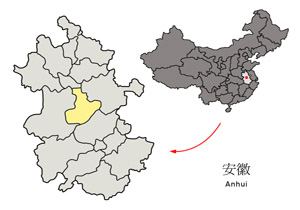

Location of Hefei Prefecture within Anhui Downtown Hefei's Sipailou business district
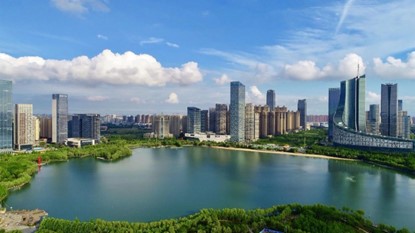

Hefei is a prefecture-level city and the provincial capital of Anhui province, China. Located in central Anhui, it borders Huainan to the north, Chuzhou to the northeast, Chaohu to the southeast and Lu'an to the west.
Brief Introduction of USTC
The University of Science and Technology (USTC)of China is a new type of university established by the Chinese Academy of Sciences (CAS) after the founding of the New China. CAS has supported the University by combining most of its Institutes with the departments of the University. CAS has pooled the entire strength of its faculty and its advantage in science and technology for the development of the University. USTC is listed in the top 16 national key universities by the Central Committee of the CCP, becoming the youngest national key university.
Since the 1990s, USTC has taken the initiative of adapting to the necessity and challenge of the development of science and technology, education, and social economy. The University frequently deepens the reform of teaching and scientific research, and makes structural adjustments. In 1995, USTC was approved by the Central Government as one of the first batch of universities obtaining the support of construction in the National 9th Five-year Plan and the 'Project 211'. Since 1998, USTC takes an active part in the implementation of the CAS 'Knowledge Innovation Program'. In June of 1998, President Jiang Zeming inscribed the following words for the 40th anniversary of the University: 'Facing the 21st Century, Building a First-class University, and Cultivating Top-level Talent'. His words make greater demands on USTC and create an orientation for USTC.
In 1999, USTC was singled out as one of the 9 universities enjoying priority support from the nation's 'Plan of Vitalizing Education Action Geared to the 21st Century', obtaining unified support and guidance from the CAS, the Ministry of Education, and the Anhui Provincial Government. The Plan (Project 985) is aimed at supporting the development of high-level universities in China. USTC will spare no effort in building the University into a moderate-scale, high-quality, reasonable-structured, high-level university by 2018, the 60th anniversary of USTC. Until then USTC will turn into an educational and research base in collaboration with the CAS and other research institutions for the education of first-class talent possessing innovative capacity and modern knowledge structure. It will be a base with the capacity of knowledge and technology innovation. Since September of 2002, USTC has been implementing its 'Project 211' construction during the 10th National Development Plan.
The University offers 43 undergraduate specialties, 17 first-category Ph.D. degree programs, 89 second-category Ph.D. degree programs, 105 second-category master degree specialties. USTC also boasts of 3 professional master degree specialties of MBA, MPA and Master of Engineering, 17 post-doctoral mobile stations, 45 specialties for the post-doctoral mobile stations. The University is the key base for the education of the Ph.D. students within the CAS. USTC has 17 Natioanl Key Displines, 4 national bases for the basic scientific research and the training of the talented teaching personnel in mathematics, physics, mechanics and life science. The University also boasts of 3 national research institutions of the National Synchrotron Radiation Lab, the State Key Lab for Fire Science and the National High Performance Computing Center. The University has 6 CAS key labs of Bond-selective Chemistry, Structure Analysis, Structural Biology, Internal Friction and Defects in Solids, Quantum Information, and Mechanical Behavior and Design of Materials. The University also has some key scientific research institutions such as the CAS Research Center for Thermal Safety Engineering and Technology.
The University has more than 3600 faculty and staff numbers,22 CAS and CAE academicians, 432 professors. The number of students accepting normal higher education at USTC totals around 13794, 8243 undergraduate students, 3873 master degree students, and 1498 Ph.D. students among them. Besides, the University has 1575 professional master degree students, 110 post-doctoral fellows and 134 guest professors.
The campuses cover an area of 1.33 million square meters, with 800,000 square meters of building area. The library has a collection of 1.51 million books, 2800 kinds of journal in the language of Chinese or English, 600,00 electronic books and 10300 electronic journals in Chinese or in English. The library has established more than 30 network data retrieval systems including SCI, EI, CA, ISTP, INSPEC. A first-class campus computer network is running at the University. 5 public experimental centers for teaching and research is under construction, namely the Center of Physical Science, Life Science, Information Science, Engineering and Material Science, and Application of Synchrotron Radiation. The University is facilitated with a batch of important research equipments such as Ultra Low Temperature STM, High-resolution Transmission Electron Microscope, and Super-conducting Nuclear Magnetic Resonance Spectrometer. The assets of the whole research instruments and equipment in total values at around 490 million RMB (Chinese Dollar).
Since the founding of the University, USTC has undertaken a large batch of national, ministerial and provincial research projects, achieving large number of research results. Since its participation in the CAS Experimental Program of Knowledge Innovation, USTC has achieved a batch of important and innovative results in the basic research of nano science and technology, quantum information science, life science research, fire science and fire protection technology, polar scientific investigation and research, bio-mass clean energy research. As a result, 3 papers were published in 'Nature', 1 in 'Science'. 5 research results won national prizes, namely 1 Follow-up Prize and 1 Third Prize in the National Natural Science Awards, 2 Follow-up Prizes and 1 Third Prize in the National Achievement Awards in Science and Technology. Among these results, 'Solvothermal Preparation and Characterization of Nanocrystalline Nonoxides' won Second Prize in the National Natural Science Awards in 2001; 'Early Fire Intelligent Monitoring System for Large Space Buildings and Hidden-trouble of Electric Fire Checking System among them among them' and 'An Artificial Monitoring and Policy-making Support System for Preventing and Reducing the Calamities of Anhui Povince' both won Follow-up Prize in the National Achievement Awards in Science and Technology. 5 research results has been candidates 7 times for the list of the 10 Major Pieces of Sci-tech News in China, the 10 Major Pieces of News of Basic Research in China, the 10 Major Pieces of Sci-tech News in Chinese Universities, and the 10 Major Achievements in Science and Technology in Chinese Universities. In recent years, the University has solely undertaken or taken part in a lot of national major scientific programs, such as the second-phase project for the National Synchrotron Radiation Lab, HT-7U Super-conducting Tokmak.
USTC has taken a leading position among Chinese universities on the number of research papers published internationally and in the citation rate of the papers. Since 1996, USTC consistently ranks No. 4 on the number of papers included by SCI; Since 1999, the University ranks No. 1 on the number of papers published in the journals with high-impact factor among universities across China. Between 1991 and 2000, USTC ranks No. 1 among Chinese universities on the number of papers published in the internationally distinguished journals of 'Science', 'Nature', 'PRL', and 'Jacs'. USTC ranks No. 2 among the universities and research institutions in the world on the number of nano-research papers published from 1996 to 2000.
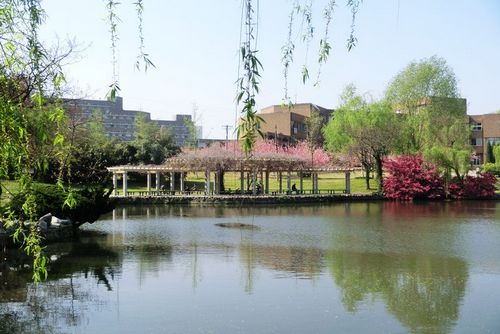
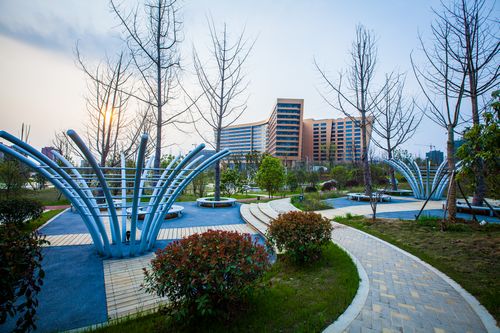
USTC actively encourages and push forward transfer of the research results and the industrialization of high and new technology. The University-Region (Enterprise) Cooperation Committee was established for the strengthening of the cooperation with the local governments and enterprises. The University has established and developed the relationship of cooperation with some famous large and medium-sized enterprises such as the Daqing Petroleum Administration, Sinopec, the Bao Steel Group, Legend Group, and Haier Group. In total, 16 local governments and enterprises have become members of the USTC-Region (Enterprise) Cooperation Committee. Some research results incubation bases have been established, such as the Hefei National University Garden of Science and Technology, the Luohe Hi-tech Garden, the Guiyang Industrial Garden of Science and Technology, the Shanghai Research and Development Center, and the Shenzhen Futian Base of Industry, Teaching and Research. The Anhui Provincial Government and USTC have jointly presented the 'Province-University Cooperation Program', fostering the industrialization of technological results. USTC also actively files applications for the 'Seed Funds' established by prefectures and cities in China, sparing no efforts in making contribution to the regional economic construction and social development.
The University has concluded agreements of cooperation and exchange with around 100 universities and research institutions in more than 30 nations and regions. Around 300 international experts and scholars will visit USTC every year for lecturing and collaborative research. USTC has sent around 10,000 individual visits to more than 30 nations and regions for study and cooperative research.
To make these activities beneficial to the students, we need conversation facilitators who are
▲ native speakers from the US, Britain, Canada, Australia, New Zealand, without intrusive accents
▲ holders of a bachelor’s degree
▲ out-going and easy to get along with
▲ good at interpersonal skills, with a willingness to help others
▲ knowledgeable about current affairs, modern technologies, western culture, etc.
▲ experienced Internet users
▲ clearly articulated and good talkers
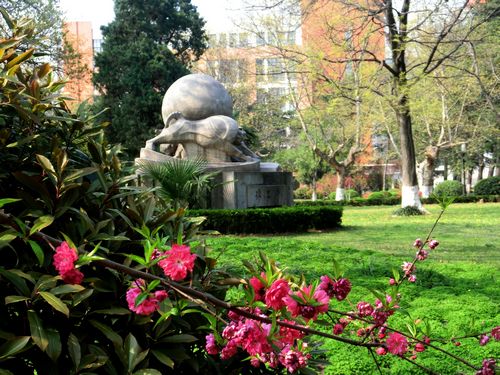
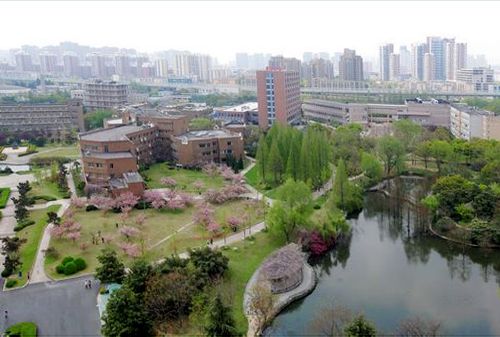
English Teachers Number required: 2-3 Posts
Contract Period:1st Jul, 2026 - 30th Jun, 2027 (12months contract and there will be classes for 2-3 weeks in July and no classes in Aug)
Requirements: MA/MS or PhD and TESOL /TEFL,teaching experience preferred
Monthly Salary: 15,000 RMB - 20,000 RMB
including winter and summer holiday; one month salary (before tax) for year-end bonus paid before completion of the second semester
Teaching hours: 16-20 classes per week (basically, only 14-18 teaching hours per week)
Age of students: university students
Accommodation: a free private furnished apartment on the university campus
Medical Insurance: The school provides comericial insurance including accident and medical insurance.Teachers are advised to take adequate insurance cover before leaving their own country.
Paid Holiday: all legal holidays in China which include New Year's day, Spring Festival, Qing Ming Festival, Labor Day, Dragon Boat Festival, Mid-autumn Festival, National Day, and other holidays designated by law and regulations; two days off for Christmas or one day off depending on teacher's country's culture conventions on condition.
Work permit notice : The school will provide work permit notice for China at no cost to the teacher.
Air-ticket Reimbursement: On completion of a school year contract, a round way air-ticket reimbursement will be made with electronic itinerary, boarding passes, and invoice in good condition.
Closest Airport: Hefei Xinqiao International Airport
French Teachers Number required: 1-2 Posts
Contract Period: 1st Jul, 2026 - 30th Jun, 2027 (12 months contract and there will be classes for 2-3 weeks in July and no classes in Aug)
Requirements: MA/MS or PhD and Certificat de Professeur de Français (CPF)/Certificat d'aptitude au professorat de l'enseignement du second degré (CAPES), teaching experience preferred
Monthly Salary: 18,000 RMB - 22,000 RMB
including winter and summer holiday; one month salary (before tax) for year-end bonus paid before completion of the second semester
Teaching hours: 14-16 classes per week
Age of students: university students
Accommodation: a free private furnished apartment on the university campus
Medical Insurance: The school provides comericial insurance including accident and medical insurance.Teachers are advised to take adequate insurance cover before leaving their own country.
Paid Holiday: all legal holidays in China which include New Year's day, Spring Festival, Qing Ming Festival, Labor Day, Dragon Boat Festival, Mid-autumn Festival, National Day, and other holidays designated by law and regulations; two days off for Christmas or one day off depending on teacher's country's culture conventions on condition.
Work permit notice : The school will provide work permit notice for China at no cost to the teacher.
Air-ticket Reimbursement: On completion of a school year contract, a round way air-ticket reimbursement will be made with electronic itinerary, boarding passes, and invoice in good condition.
Closest Airport: Hefei Xinqiao International Airport